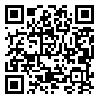Volume 9, Issue 5 (8-2013)
J Health Syst Res 2013, 9(5): 540-549 |
Back to browse issues page
Download citation:
BibTeX | RIS | EndNote | Medlars | ProCite | Reference Manager | RefWorks
Send citation to:



BibTeX | RIS | EndNote | Medlars | ProCite | Reference Manager | RefWorks
Send citation to:
Seyed Homamodin Javadzade, Gholamreza Sharifirad, Mahnoosh Reisi, Elaheh Tavassoli, Fatemeh Rajati. Health Literacy among Adults in Isfahan, Iran. J Health Syst Res 2013; 9 (5) :540-549
URL: http://hsr.mui.ac.ir/article-1-630-en.html
URL: http://hsr.mui.ac.ir/article-1-630-en.html
Seyed Homamodin Javadzade1 
 , Gholamreza Sharifirad2
, Gholamreza Sharifirad2 
 , Mahnoosh Reisi3
, Mahnoosh Reisi3 
 , Elaheh Tavassoli4
, Elaheh Tavassoli4 
 , Fatemeh Rajati5
, Fatemeh Rajati5 


 , Gholamreza Sharifirad2
, Gholamreza Sharifirad2 
 , Mahnoosh Reisi3
, Mahnoosh Reisi3 
 , Elaheh Tavassoli4
, Elaheh Tavassoli4 
 , Fatemeh Rajati5
, Fatemeh Rajati5 

1- PhD Candidate, Student Research Committee, Department of Health Education and Promotion, School of Health, Isfahan University of Medical Sciences, Isfahan, Iran
2- Professor, Department of Health Education and Promotion, School of Health, Isfahan University of Medical Sciences, Isfahan, Iran
3- PhD Candidate, Student Research Committee, Department of Health Education and Promotion, School of Health, Isfahan University of Medical Sciences, Isfahan, Iran (Corresponding Author) Email: reisi_mr@yahoo.com
4- PhD Candidate, Department of Health Education and Promotion, School of Health, Shahid Beheshti University of Medical Sciences, Tehran, Iran
5- Department of Public Health, School of Health, Kermanshah University of Medical Sciences, Kermanshah, Iran
2- Professor, Department of Health Education and Promotion, School of Health, Isfahan University of Medical Sciences, Isfahan, Iran
3- PhD Candidate, Student Research Committee, Department of Health Education and Promotion, School of Health, Isfahan University of Medical Sciences, Isfahan, Iran (Corresponding Author) Email: reisi_mr@yahoo.com
4- PhD Candidate, Department of Health Education and Promotion, School of Health, Shahid Beheshti University of Medical Sciences, Tehran, Iran
5- Department of Public Health, School of Health, Kermanshah University of Medical Sciences, Kermanshah, Iran
Abstract: (4154 Views)
Background: Accessing to health information, getting informed about the health and illness issues is an important factor for health status. It is expected that having a good health requires using this type of information. Having such active role in patient and healthy population needs higher level of health literacy. This study measured health literacy of adults in Isfahan, Iran using Persian standardized version of newest vital sign (NVS) and short version of test of functional health literacy assessment (S-TOFHLA).Methods: In a cross-sectional study, 525 adults (over 18 years) were enrolled in Isfahan. The data collection was done by NVS and S-TOFHLA questionnaires which translated into Persian and were standardized.Findings: The mean age of the study subjects was 33.6 ± 12.5 years. According to S-TOFHLA, 46.5% of adults had adequate health literacy, 38% had borderline literacy and 15.5% had inadequate health literacy. With NVS, 25.5% of study subjects had inadequate health literacy, 36% had borderline literacy and 38.5% had adequate health literacy. The association between the results of the two questionnaires by the Pearson correlation test r that this questionnaires were correlate (r = 0.72; P < 0.001). In this study, there was a statistically significant association between the educational level, age, gender, economical status and health literacy status. Inadequate health literate was more likely to be older, less educated, woman and low income.Conclusion: The results showed that the Persian version of the S-TOFHLA in adults and the NVS for use in the Persian adult population had adequate efficiency and reliability to be used. In the other hand, results of this study showed a wide range of adult in Isfahan had inadequate and marginal health literacy. This suggested the need for greater attention to the issue of health literacy on health promotion programs.
Type of Study: Research |
Subject:
education health and promotion
Received: 2020/07/16 | Accepted: 2013/08/15 | Published: 2013/08/15
Received: 2020/07/16 | Accepted: 2013/08/15 | Published: 2013/08/15
| Rights and permissions | |
 |
This work is licensed under a Creative Commons Attribution-NonCommercial 4.0 International License. |



